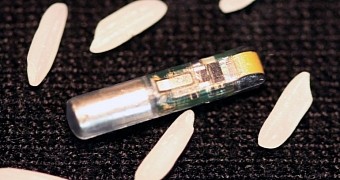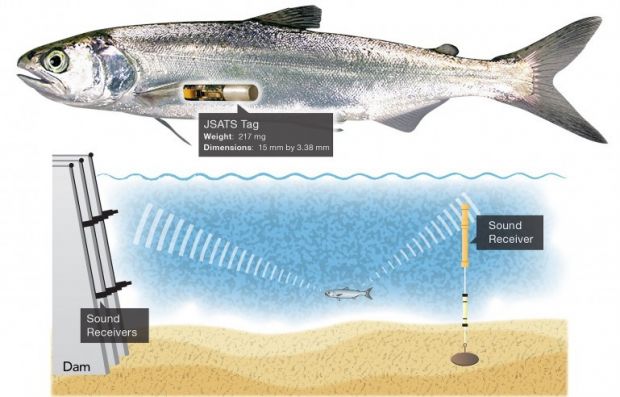Human construction always affects nature around it, and it's the animals that have to adjust their habits whenever we build a structure or group of structures.
How underwater fauna is affected by the building of hydroelectric dams has been the subject of ongoing study for decades.
One of the best sources of information has been the surgical implantation of salmon and other young fish with acoustic tracking tags.
Unfortunately, the weight of the device can affect their behavior on its own, and the implantation procedure is not exactly risk-free.
Now, though, both issues may have been solved, or at least alleviated somewhat, thanks to the invention introduced by a team at the Pacific Northwest National Laboratory (PNNL).
They have created a new sort of acoustic tag, measuring 15 x 3.38 mm (about as much as two grains of rice) and weighing 217 milligrams (a third of the surgically implanted tags).
The device has a temperature sensor and a transducer connected by a circuit board and powered by a custom 3-volt battery.
It only takes 20 seconds to inject them inside the body of a fish, instead of crews needing to conduct literal surgeries that take 2 minutes and rely on anesthetics and stitches.
Set to beep once every 3 seconds, the tags can operate for 120 days on battery power (as opposed to 23) and have already shown a higher survival rate for fish compared to those carrying older tags (study conducted in 2013). Smaller tags are already being invented for eels and lampreys.

 14 DAY TRIAL //
14 DAY TRIAL // 

